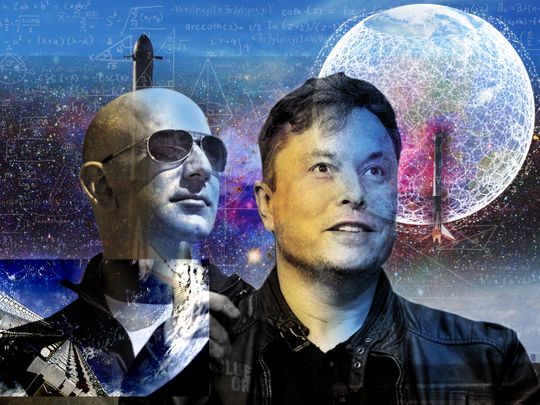
Highlights
- Some 47,000 satellites are planed for launch to deliver cable-like internet and connect the unconnected.
- There are currently 9 entities that plan to blanket the whole world with low-earth-orbit satellites.
- They promise to link the remotest parts of the planet, with high-speed, low-latency service.
- But some scientists fear these constellations could deposit more high-altitude alumina in the Earth’s upper atmosphere as the satellites burn up after disuse.
- The sheer numbers could also lead to potentially dangerous on-orbit collisions on a regular basis, and raises the risk of impacts due to meteoroids.
The year is 2021. It will be remembered as the year of vaccine race, when billions of COVID-19 shots were deployed to heal the world. It will also be known as the constellations race — when thousands of were deployed to bridge the world.
When terrestrial lines fail, such as what happened to Tuesday (June 8, 2021), satellite-based ones kick in. No one is supposed to even notice the outage. That, in general, is the idea behind the new space race.
Since the start of the Space Age (1957, with Sputnik’s launch), more than 8,800 objects had been launched into space. The new space age could bring that number significantly higher. Within just a few years — some 47,000 new satellites are planned.
It’s a new space era (dubbed by some as Space Race 2.0) in which several satellite mega constellations projects backed by the major powers are poised to affect global dynamics — redefining industries and, possibly, even warfare. This completely extra-terrestrial network presents a new ecosystem, which carries with in unprecedented, and multiple, challenges, especially from the technical, user and regulatory standpoints.
Pole position
In this race Starlink is taking pole position. With nearly 1,500 satellites already launched (610 so far this 2021), Starlink has started testing its network (with 500,000 "beta testers").
Eventually, SpaceX hopes to launch as many as 42,000 satellites as part of Starlink. If that sounds exciting (or crazy), it even gets wilder, as there are eight similar projects in the works.

1,500
number of Starlink satellites currently in orbit, out of the planned 42,000.
Q: What’s happening now?
Starlink may be the most advaced in the game of low-latency, low-earth-orbit satellite internet constellation sweepstakes. Following are the eight (8) similar projects proposed or are in progress:
1. Kuiper Project
Satellites planned: 3,236
Satellites launched: 0
The Kuiper Project, a subsidiary of Amazon, was announced in 2019 by CEO Jeff Bezos. The firm in turn wishes to launch a constellation of satellites to compete with Starlink and Oneweb, this time 600km away from the earth.
The project is still at an early stage, because no satellite has yet been put into orbit, the FCC (US Federal Communications Commission) has, however, already granted the dispatch of 3236 devices into orbit to constitute the Amazon constellation. To keep its license, Kuiper will have to deploy half of them before 2026, and the other before 2029. On December 18, 2019, Amazon announced its Kuiper team has moved to a permanent R&D HQ with the latest facilities to design and test its megaconstellation of broadband LEO satellites. For its launch, Amazon will be able to benefit from its aerospace subsidiary Blue Origin, but the firm also signed deals to use other services to accelerate the deployment.
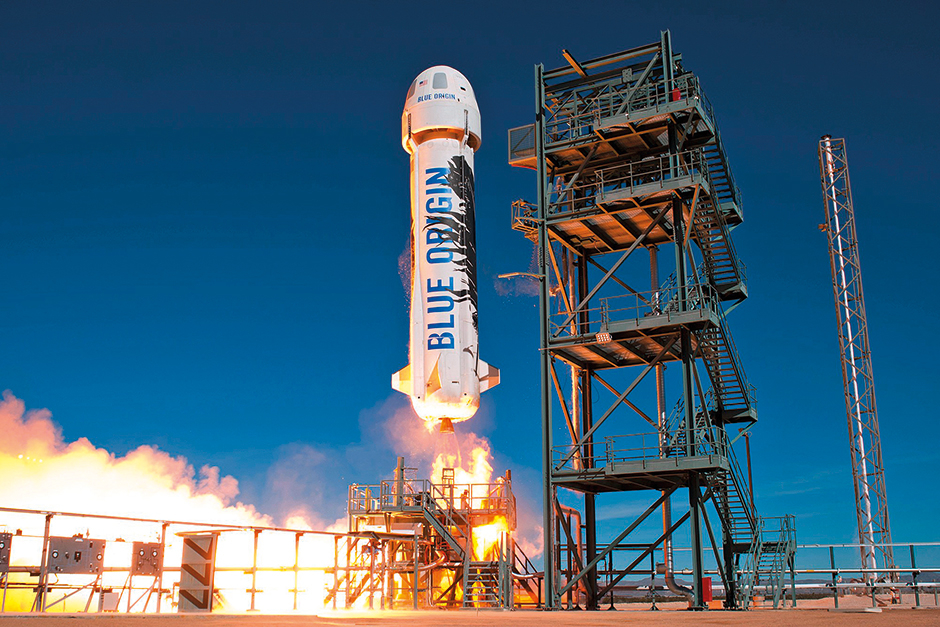
2. OneWeb
Satellites planned: 648
Satellites launched: 218
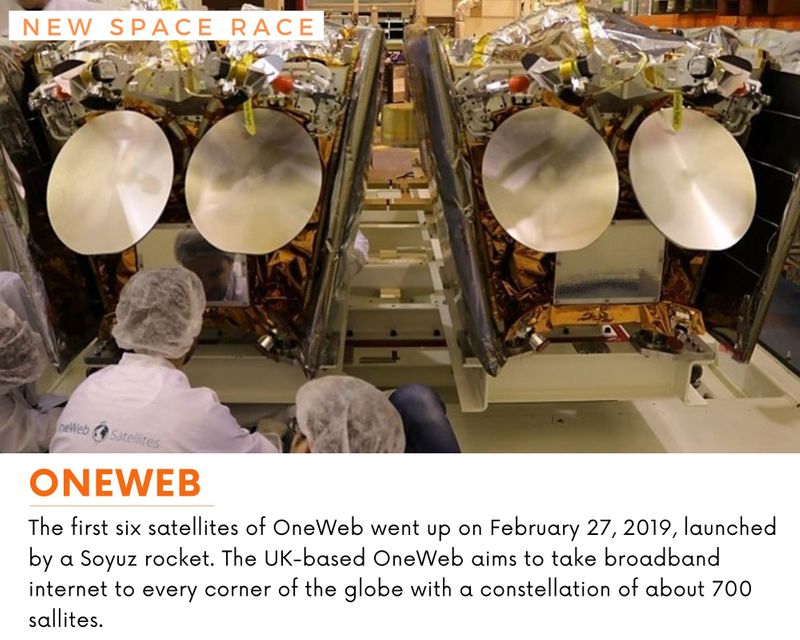
OneWeb was launched in 2014. It is strongly similar to Starlink with connection of 50 ms latency and 50 Mbps minimum speed.
The OneWeb satellites are made in collaboration with Airbus Defense and Space. OneWeb places its satellites in orbit 1,200km above the Earth. The firm has passed through several hands, but is currently owned by the British government, Indian conglomerate Bharti Global and satellite telecommunications company Eutelsat.
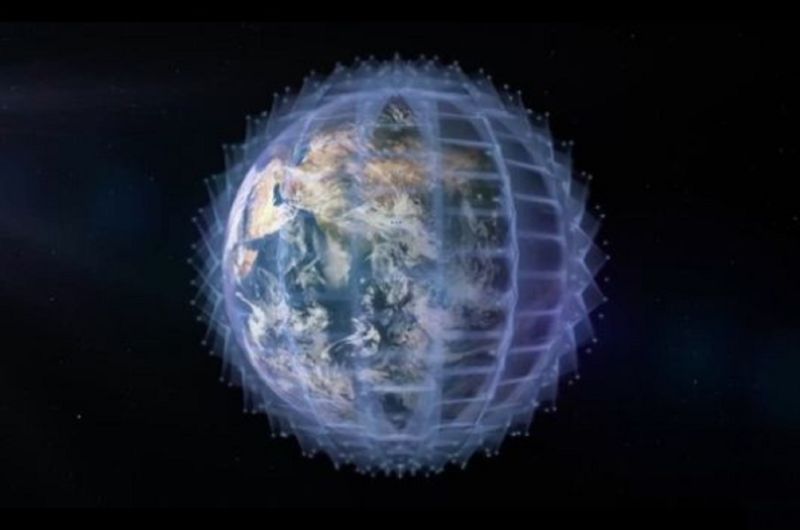
The company plans to send up to 648 satellites in orbit. It currently uses Russian Soyuz rockets for launches, with 36 launched on May 29, 2021, bringing the total to 218 in orbit.
3. Lynk
Satellites planned: up to 5,000
Satellites launched: 4
On May 25, 2021, Lynk announced that it has applied for a commercial operator's license with the US Federal Communications Commission (FCC) to offer its “cell towers in space” services around the world. Lynk takes a different approach from other constellation projects. Its goal is not to deploy an internet connection service, but cellular "towers" in space, to provide an automatic backup system to ensure connectivity to areas impacted by cellsite shutdowns.
The goal is to provide a satellite telecommunication service for any mobile phone — especially in remote areas that do not have a traditional mobile network. Currently, the only way to use the means of satellite telephony services is to have a suitable device or to add an accessory to a conventional smartphone. Lynk’s backers claim to have developed software for their satellites which allows conventional telephones to be configured in order for them to receive the Lynk network. In 2020, using a test satellite deployed from the International Space Station, Link succeeded in connecting an unmodified smartphone to space.
Lynk has announced they will use 25-kg satellites which will orbit about 500km above the Earth. Its fifth satellite, called Transporter-2 will be launched on SpaceX Falcon 9 rocket on June 24, 2021. Its ultimate goal: sell satellite services to traditional telecommunications operators and the general public.
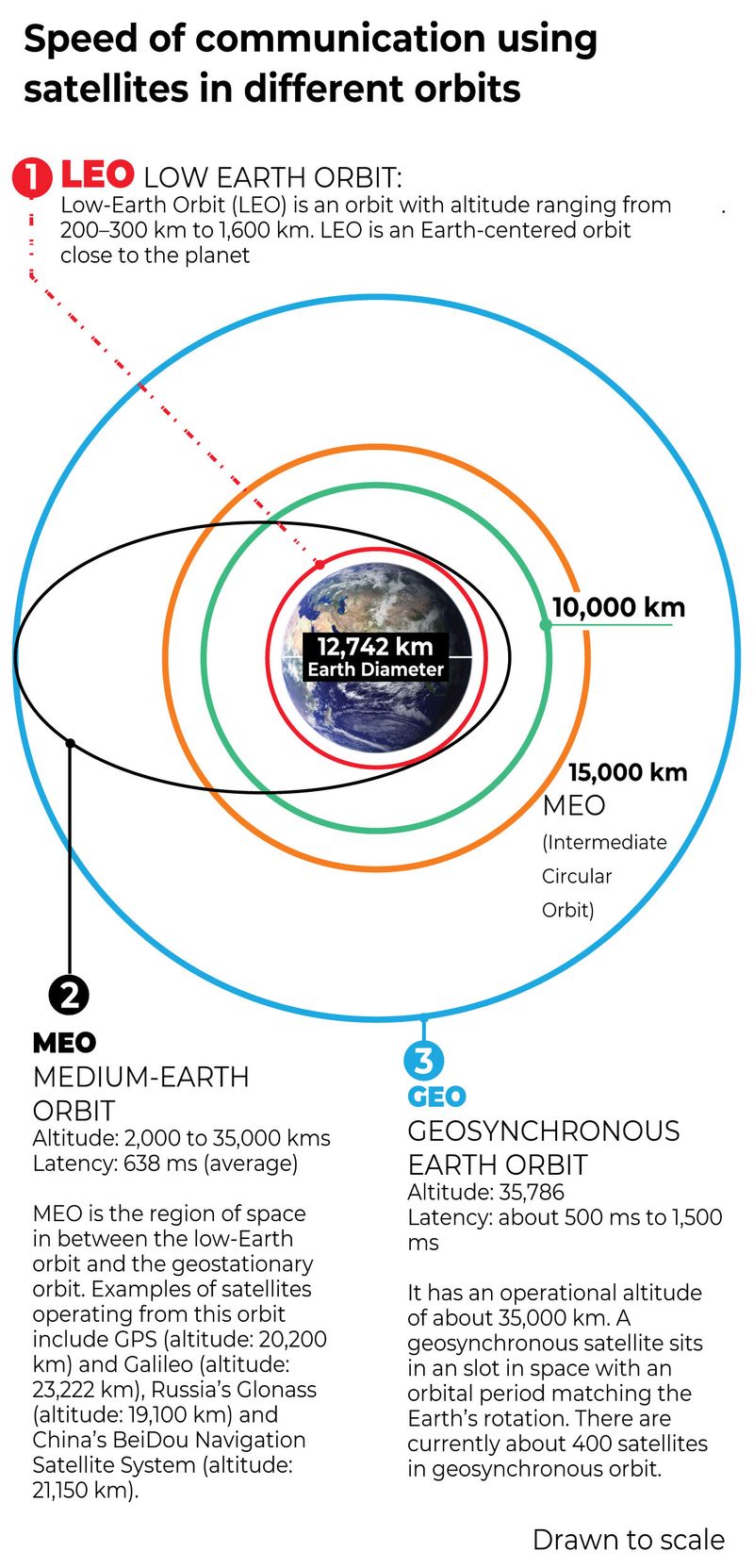
4. SatRevolution
Satellites planned: 1,024
Satellites launched: No data
SatRevolution is a Polish company launched in 2016. What sets it apart is its aim to deploy “nano satellites” to conduct real-time and ultra-precise terrestrial observation service, in a satellite constellation. The firm plans to deploy approximately 1,024 low-earth orbit satellites by 2026, which the company said will allow their network full observation of the Earth at all times. The service will, for example, make it possible to collect photographs and multispectral data for the agriculture or energy sectors. The satellites will be located at about 500km altitude and should be synchronised with the illumination of the Earth by the Sun. To deploy its satellites, SatRevolution has established a partnership with the American firm Virgin Galactic.
5. Program Sfera
Satellites planned: 600
Satellites launched: Not known
Russia plans to deploy fast internet access via LEO satellite constellations. Russia joined the launch of OneWeb devices earlier, but it has also envivionsed Sfera (also known as Efir). The project aims to provide a broadband connection around the northern sea route, above the Arctic Circle, a strategic point for Russia. A constellation of 600 satellites should be gradually deployed at an altitude of 870km, from this year (2021). The complete and operational Sfera network is scheduled for 2024.
6. Guowang
Satellites planned: 12,922
Satellites launched: Not known
Guowang is China' answer to Starlink. It plans to deploy its own constellation of low-orbit satellites to provide internet access to Chinese people who live in the country's remote areas. In total, the aim is to deploy no less than 12,922 satellites between 500km and 1,145km. The mega-constellation would extend to the entire Asian continent, while Sfera focuses on Russia, and OneWeb, Amazon and Starlink on the United States and Europe at first. Guowang is an integral part of the China's "Belt and Road" initiative.

7. The European project
Satellites planned: 600
Satellites launched: 0
It is the European Union's own plan to deploy a high-speed internet network via satellite constellation. The project is still in its infancy and does not have an official name. Presented in early 2021, the project aims to provide an efficient internet network, where it is not otherwise available, such as remote areas, while on the move or on a plane.
The European constellation will not be deployed before 2027 and it is expected to send around 600 spacecraft into low earth orbit. While the costs are substantial – around €5 billion ($6.09 billion) — the aim is to maintain EU's edge as a space power. The project will allow Europe to establish its "strategic independence" in situations where a quality connection is not available other than via satellite. Also, this will guarantee secure data exchanges in times of crisis, without going through foreign third parties.
8. Lightspeed/Telesat
Satellites planned: 298
Satellites launched: 0
The Lightspeed constellation project is planned by the Canadian satellite telecom firm Telesat, jointly with French and Italian stakeholders. Telesat aims to blanket the whole world with a high-speed and fast internet connection. The project is slated for completion by 2023. Initially, the Lightspeed constellation will consist of 298 satellites located in polar orbits between 1,015 and 1,325km away from Earth. Unlike its competitors, Lightspeed will only cater almost exclusively for professional services and will arguably be more expensive. Telesat thus promises a connection of several terabits per second.
It's the delay between a user's action and a web application's response to that action (the total round trip time it takes for a data packet to travel).
HOW IS LATENCY COMPUTED:
An electromagnetic wave (EMW) travels at the speed of light (300,000 km/second). The total roundtrip time for a satellite internet using geosynchronous satellite (altitude: 35,000km) is 70,000km. If you divide that distance by the speed of light (300,000 km/sec), latency is 233 ms.
The round-trip time is called latency. The higher the latency, the slower the internet. Real-life latency can be much higher (result: lower speed) due to various system delays. By comparison cable internet (using fibre-optics cable) has latency between 20 ms to 40 ms.
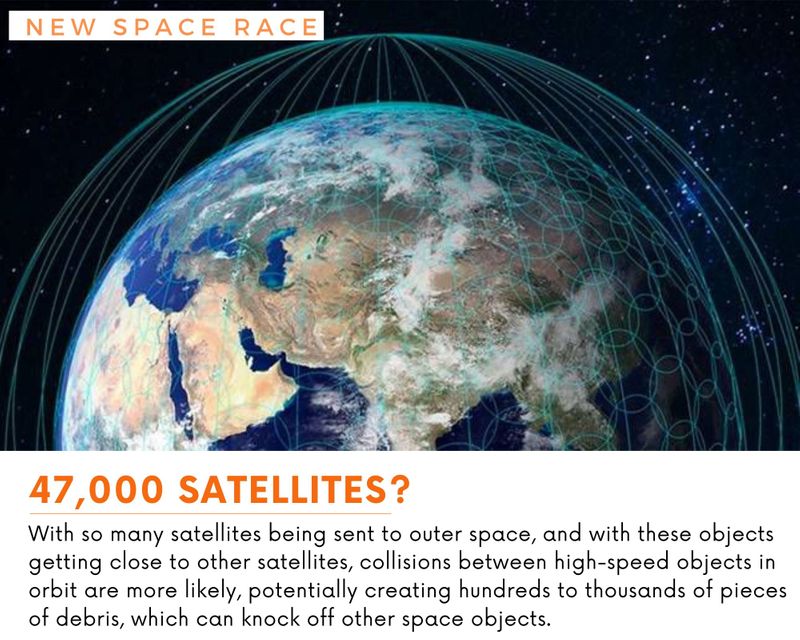
Q: What are the upsides of LEO constellations?
Internet anywhere: Much of the globe (or even within the US) has “dead spots”, i.e. still without internet service. Starlink promises internet is faster than traditional satellite internet, and comparable to fibre-optics-based intenet service.
High speed: a 30-millisecond average latency for “gound-to-ground” link via Starlink LEO satellites is promiswed. This is in contrast to geosynchronous earth orbit (GEO, latency = 500 ms ) or medium-earth orbit (MEO, latency=125ms). High-speed data services (high data volume) applications designed to support operations that require near real-time access to rapidly-changing data (like stock trading, cryptography, data mining, etc).
Flexibility: Service can be used for homes, ships, aircraft, and even Arctic research stations.
Q: What are the downsides?
Atmospheric pollution:
An article published in Nature on May 20, 2021 came with a warning. it pointed out that satellite re-entries from the Starlink mega-constellation alone could deposit more aluminium into Earth’s upper atmosphere than what is done through meteoroids — they could thus become the dominant source of high-altitude alumina.
Space debris:
Due to the sheer numbers of planned spacecraft, there’s an increased risk of space objects in low-earth orbit. As such, untracked debris could lead to potentially dangerous on-orbit collisions — on a regular basis due to the large number of satellites within mega-constellation orbital shells. “The total cross-section of satellites in these constellations also greatly increases the risk of impacts due to meteoroids,” wrote Aaron C. Boley, or the Department of Physics and Astronomy, The University of British Columbia, Vancouver, Canada. “De facto orbit occupation by single actors, inadequate regulatory frameworks, and the possibility of free-riding exacerbate these risks.
Q: What needs to be done?
Satellite industry, space science and astronomy experts say international cooperation is urgently needed. It's an entirely new industry. There are voices calling for a regulatory system that takes into account the effects of tens of thousands of satellites that are about the pepper the lower Earth orbit. It's nothing like the world has seen before.








